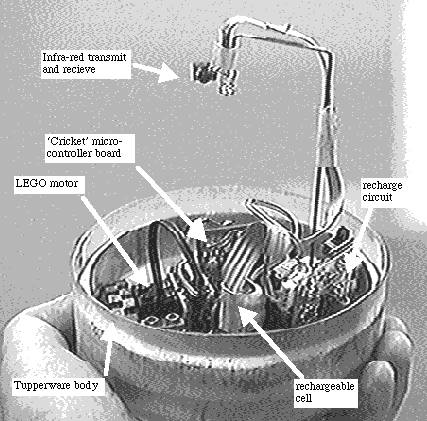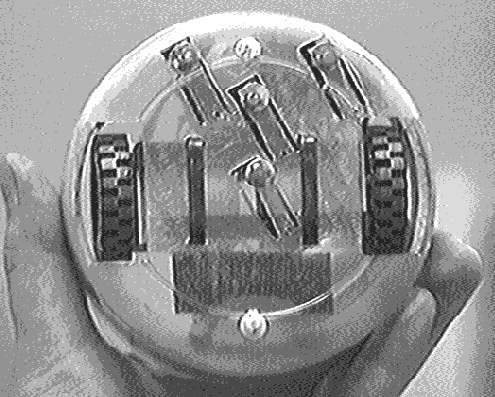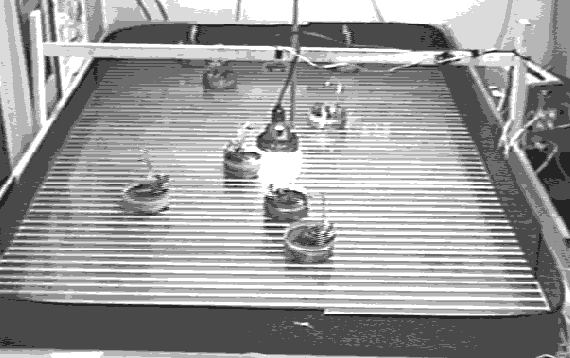Embodied EvolutionRichard A. Watson, Sevan G. Ficici |

|
Embodied EvolutionRichard A. Watson, Sevan G. Ficici |

|



The figure below shows the frequency with which the light is successfully reached by the robot population ('hit rate') over time. All experiments used a population of eight Tupperbots. The embodied evolution experiment evolves the weights from an initial condition where all weights are zero. We also tested a hand-designed solution which (after considerable 'tuning') achieves approximately 10 hits per minute. Embodied evolution produces a population with a performance that exceeds the hand-designed solution after about one hour. Interestingly, the evolved solutions exhibit qualitatively different behavior from our hand-designed solution: we designed a Braitenberg-style [1984] 'swagger,' but evolution favoured a spiraling solution.
